Doctors of ‘the system’ explain best ways of how cities, provinces can manage COVID-19 crisis
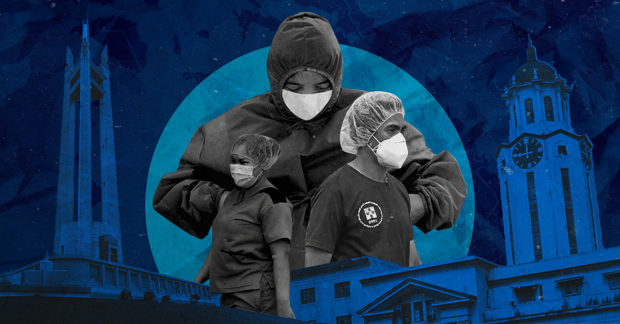
Image: INQUIRER.net/Marie Faro
When Dr. Lei Alfonso found out her dad had COVID-19 symptoms, he was all the way in Pampanga while she was in Metro Manila.
Despite practicing public health for a decade, Alfonso felt herself panicking at the thought of him possibly having the infectious disease.
“If I myself, I’m already a doctor, I felt that helplessness, how much more other people?” she told INQUIRER.net.
What she knew based on her practice was that “helplessness can be prevented by being prepared.”
That was back in March, when coronavirus cases in the country were spiking to the hundreds. At the time, she and colleagues from the Philippine Society of Public Health Physicians (PSPHP) — of which Alfonso is a founding member — were crafting modules to help prepare local government units (LGUs) handle the crisis.
Article continues after this advertisementPSPHP, together with the Alliance for Improving Health Outcomes (AIHO) and the Foundation For Family Medicine Educators, Inc. (FAMED) are behind version 1 of the modules titled “4-Part Recommendations for Community-Based Management of COVID-19 (CBMC).”
Article continues after this advertisement“We were working on it as if our lives depended on it, our families’ lives depended on it,” she recalled.
After sleepless nights, the groups were able to release version 1 of the LGU toolkit on March 29. Version 2 of the recommendations was released later on June 25, after AIHO piloted the materials in three provinces, namely Agusan del Sur, Aklan and Bataan through a partnership with Zuellig Family Foundation (ZFF). The updated toolkit can be found on PSPHP’s website.
The four main points of the toolkit are preparedness and response strategy, case finding and contact tracing, establishing community isolation units and providing guidance to families in preventing and managing COVID-19.
Alfonso, in an interview with INQUIRER.net, gave tips on using the toolkit and how LGUs in the country have been able to prepare for the virus, even with limited resources.
Tip 1: Understand the problem — transmission
“I think the first thing that local government should prioritize is a clear understanding of what the problem is and how to solve it,” she advised.
If it was not already clear to Filipinos who have been under lockdown since March, Alfonso said, “The enemy works by transmission.” In effect, the solution is on how LGUs can stop the disease from being transmitted.
“The problem with this pandemic is the actual interventions that work are simple, that it confounds all of us,” she said. “It’s really the strict public health measures: hand washing, physical distancing, social etiquette, masks.”
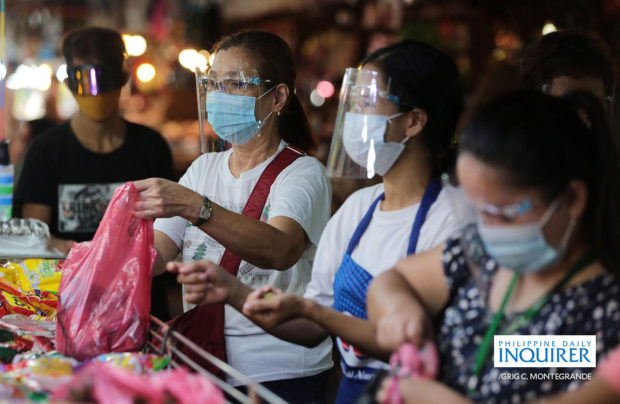
LOOK: Residents of Taytay, Rizal wear face shields and face masks at Taytay Public Market on Tuesday, August 11, as a double layer of protection from the coronavirus. The Municipality of Taytay passes an ordinance that requires the wearing of face shields in public places. Image: Philippine Daily Inquirer/Grig C. Montegrande
There remains no cure or vaccine for the virus, which has infected over 160,000 in the Philippines as of Aug. 18.
The best bet remains to be prevention, as Alfonso stresses that “hospitals are the last line of defense.”
“You get hospitals filled up as a symptom that you’re not catching [your patients] early enough so that they don’t end up in the hospital,” she noted.
Understanding the problem is important too in bringing clarity, especially in facing a virus that has affected countries at an unprecedented scale.
“Things are easier to be done when there is a clear vision and everyone sees the big picture and everyone knows where to contribute,” Alfonso said.
Tip 2: Examine your resources
After being clear on what the problem is, an LGU should take stock of resources that they already have and what they do not have.
“When we talk about public health in general, you don’t have limitless funds. You have to make sure your interventions are worth every peso,” she said.
Alfonso and the team behind the modules ensured that their recommendations would be realistic. With feedback from the Department of Health (DOH) and practitioners on the ground, the modules have principles that apply to any LGU.
The first module taps into existing governance structures for disaster response, such as Operation Listo and barangay health emergency response teams (BHERTs).
“An LGU that has those interventions in place, ready for disaster response, should be prepared for anything that happens,” she said.
Local leaders must then get into a “choosing game” on what resources to invest in so that they can better tackle the public health crisis. For example, Alfonso said that from an operational point of view, mass testing is not feasible because of its costs. It also “does not really translate into behavior change.”
“What you need to do is manage patients,” she said. “We’d rather focus on that management. We need to prevent people from getting it. We need to protect communities, families and individuals.”
Tip 3: Focus on human behavior
Public health measures such as staying home and wearing a mask have been repeated ad infinitum. But how can leaders from the barangay level up to a governor ensure that their constituents are consistently complying?
“The pandemic really depends on how individuals behave right? If individuals trust they will be cared for, there is a clear direction, they are more likely to actually comply. That’s what we observed,” said Alfonso.
When asked about her thoughts on government officials labeling Filipinos as “pasaway” (disobedient) during the pandemic, the public health specialist said that there is a need to “dig deeper” into their behavior.
“It’s not just about behavior but are there structural concerns there that need to be addressed, and it’s the environment causing them to behave in a certain way,” she said. “We have families that they cannot really comply with quarantine. Why? Because they need to eat.”
“We cannot make people quarantine for the next two weeks without food. That is where the social amelioration comes in, for targeted quarantining,” Alfonso added.
She also noted that for some, being in crowds is “inevitable,” such as when using public transportation. In those cases, LGUs should ask why there is crowding in the first place.
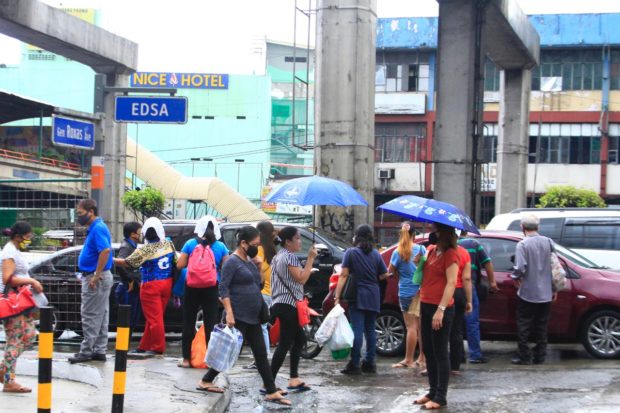
Commuters huddle in EDSA as they wait for public transportation, which has been massively decreased during community quarantines. Image: INQUIRER.net/Gabriel Pabico Lalu
For others, failing to follow measures could be a matter of communication. She cited an instance when she called a senior citizen’s attention because his mask was put on “sloppily.”
“[Maybe they don’t understand, or maybe] the messages that reach them do not really resonate,” she said.
Alfonso also mentioned that despite the “pasaway” label, data has shown that Filipinos have reduced their time outside and that majority wear masks when they leave home.
Tip 4: Look at impact of solution
But when one contracts the coronavirus, what then? Isolation and treatment must follow, but investing in this also requires careful decisions from leaders.
The third module in the recommendations provides operational guidelines in constructing an isolation unit and running it with proper staff and procedures.
“When it comes to investments, one might not be as costly as another, but it can cause more impact,” said Alfonso.
She noted that majority or about 90% of COVID-19 cases are mild, which is backed by latest data from DOH.
“For example, if I’m going to send all my mild cases to a hospital, then it means I have to spend for my PPE of every shift of health worker,” she said.
“However, the amount that I spent in building up the hospital to admit mild cases [could] actually [be used] to buy a cellphone in an isolation unit where I can just remotely monitor these mild cases who are normally walking,” she explained. “There’s always a trade off in prioritization.”
A cost-effective measure that Alfonso cited was Tacloban’s efforts in contact tracing through a QR code for constituents and visitors of the city alike, which began rolling out on July 16. She noted that it is accessible to the poor, who can simply carry the QR code in a printed ID given by their barangays if they do not have a phone.
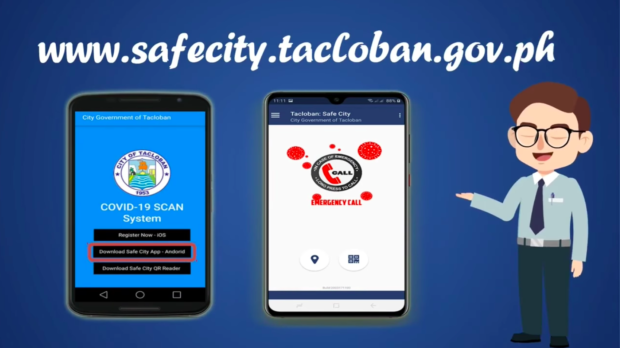
Tacloban’s contact tracing app. Image: screengrab via Facebook/@alfredsromualdez
Government and non-government offices, as well as business establishments, should have the city’s contact tracing app to scan the QR code. The app will give a prompt if an individual is cleared to enter or is a COVID-19 case. It will also log the entries of individuals for tracing purposes.
Tip 5: Communicate properly, effectively
Based on Alfonso’s experience, the public health systems’ actual “sickness” is a lack of communication.
“I’m a doctor but my patients are not individuals. My patients are health systems so some of the sickness that I treat are number one, people don’t talk together,” she explained. “Policies are there but if people don’t talk, then they don’t get implemented so we facilitate that.”
She said countries that have performed well in flattening the curve — such as New Zealand, which has been “COVID-free” for months prior to a recent outbreak — are “those that keep on engaging their people… countries with trust in systems and leaders.”
“This is very important for local government units, that constituents know what’s happening, what is going on and what’s being done for them,” she said. “At the same time, constituents can also know how they can help out. It’s two-way.”
She advised that public health messages be targeted to different segments of society.
“For each segment, you have to reach people to where they are. What appeals to me… may not appeal to another mother,” she said.
Accessibility to announcements is also important.
“I think it’s important for local governments to say, ‘OK it’s not enough to have a Facebook page because not all people have internet.’ Not everyone can watch the videos of the announcement because they only have [free] Facebook.”
And though discipline has been a constant call to citizens, Alfonso suggested appealing to “Filipino values” as well.
“If you know the impact of your actions on the safety and well-being of your family, of other people, you’re more likely to do it not because of discipline, but because of your malasakit (sympathy), pakikipagkapwa (being one with others).”
Pay-off for provinces’ early action
The successes of provinces that piloted the module lies on how they applied what they learned from these guides, based on their situations, according to Alfonso.
“What we have been getting as feedback is it helped provide a backbone for them to prepare. They didn’t fully stick with it but they would navigate ways to adapt implementation on their context,” she said.
Among the pilot provinces was Agusan del Sur, where PSPHP member Dr. Jacqueline Momville, is provincial health officer II.
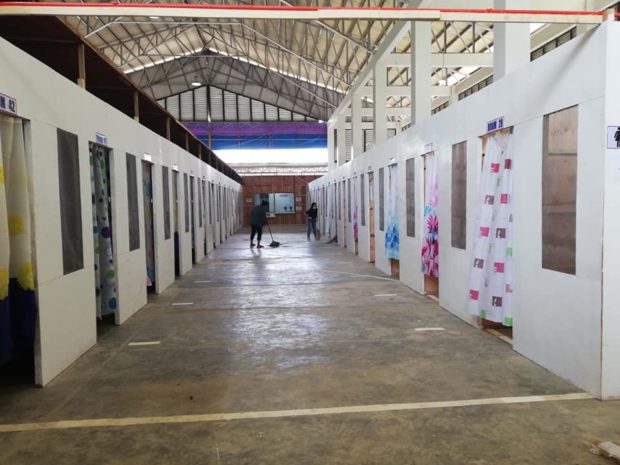
An isolation facility in Prosperidad, Agusan del Sur. Image: Facebook/Provincial Health Office Agusan del Sur
Alfonso said that even when the province had no cases and is far from COVID-19 hotspots like Manila, its local government, led by Gov. Santiago B. Cane Jr., built capacity for BHERTs and boosted internet connectivity.
Communication materials were made available to each barangay in early March and a COVID-19 hotline was set up, as per ZFF’s report in May which cited Momville.
The landlocked province also strictly monitored those coming into its borders, given that it was surrounded by provinces with cases.
Agusan del Sur confirmed its first two cases on May 31. It reported 61 cases and no deaths as of Aug. 18. JB
RELATED STORIES:
Stranded in Metro Manila, families despair to return to their roots
For more news about the novel coronavirus click here.
What you need to know about Coronavirus.
For more information on COVID-19, call the DOH Hotline: (02) 86517800 local 1149/1150.
The Inquirer Foundation supports our healthcare frontliners and is still accepting cash donations to be deposited at Banco de Oro (BDO) current account #007960018860 or donate through PayMaya using this link.